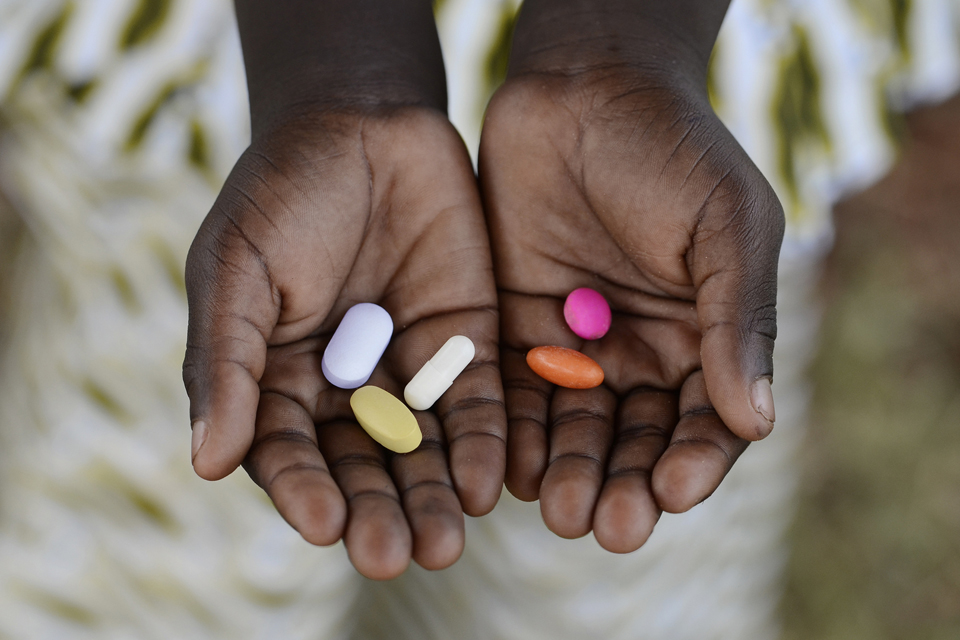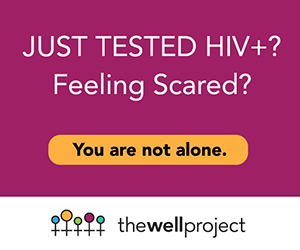Lea esta hoja informativa en español.
Table of Contents
- What Is Resistance?
- What Causes Resistance?
- Cross-Resistance and Sequencing
- How Do I Know if I Have Drug Resistance?
- Resistance Testing
- Preventing Resistance
What Is Resistance?
HIV drugs are designed to keep the amount of HIV in your body under control by preventing it from reproducing (or making copies of itself). Sometimes HIV changes, or mutates, as it makes copies of itself. These changes may allow the virus to overcome the effects of a drug and keep reproducing. When this happens, we say that HIV has developed resistance to that drug.
The best way to avoid resistance is to take your medications daily as prescribed.
Resistance is a major challenge in HIV treatment. Developing HIV treatment resistance reduces your treatment options. The best way to prevent resistance is to stick closely (adhere) to your HIV drug regimen. With good adherence, resistance is less likely to develop. This gives your current drugs the best chance of working and will keep more treatment options open to you in the future.
Click above to view or download this fact sheet as a PDF slide presentation
What Causes Resistance?
After entering a CD4 cell (disease-fighting white blood cell), HIV makes many new copies of itself; these copies then infect other CD4 cells. This process happens very quickly – HIV can make billions of new viruses every day. When making new viruses, HIV must copy its genetic information. Copying happens so fast that mistakes are made. These mistakes are called mutations. They occur randomly.
Some mutations are harmless. They produce weak viruses that cannot enter other CD4 cells. Other mutations can cause big problems – they allow the virus to reproduce even when it is exposed to certain HIV drugs. If a drug does not work against a mutated virus, that virus will reproduce rapidly. This causes the amount of HIV in your blood (your viral load) to go up, and you may need to get resistance testing and change drugs to get the HIV viral load back under control.
The main reason to use a combination of HIV drugs instead of just one is to block reproduction at several points in HIV's lifecycle. A combination of drugs aimed at several different targets is much better at preventing HIV reproduction than one drug alone. With less reproduction, viral load is lower, and mutations and resistance are less likely to occur.
Cross-Resistance and Sequencing
Cross-resistance happens when certain mutations cause resistance not just to one drug, but to an entire class (type) of drugs. There are different classes of HIV drugs:
- Nucleoside or nucleotide reverse transcriptase inhibitors (NRTIs) such as Retrovir (zidovudine) and Truvada (tenofovir disoproxil fumarate plus emtricitabine)
- Non-nucleoside reverse transcriptase inhibitors (NNRTIs) such as Sustiva (efavirenz) and Viramune (nevirapine)
- Integrase inhibitors such as Isentress (raltegravir) and Tivicay (dolutegravir)
- Protease inhibitors (PIs) such as Reyataz (atazanavir) and Prezista (darunavir)
- Entry and fusion inhibitors such as Selzentry (maraviroc) and Fuzeon (enfuvirtide)
- Attachment inhibitor: Rukobia (fostemsavir)
- Post-attachment inhibitor: Trogarzo (Ibalizumab-uiyk)
- Capsid inhibitor: Sunleca (lenacapavir)
- Boosting agents such as Norvir (ritonavir) and Tybost (cobicistat)
Cross-resistance is more likely to happen in some classes than others. For example, resistance to the NRTI Retrovir also causes resistance to many other NRTIs. Resistance to one NNRTI drug also leads to resistance to most other NNRTIs. This may limit your choices when it is time to pick a new combination of HIV drugs.
If your HIV drugs are working well to control your virus, your viral load should be 'undetectable' – so low that the test cannot detect any virus in your blood.
If you are starting a treatment regimen (combination of HIV medications) for the first time, it is important to ask your health care provider about additional options in case the current regimen does not work for you. Thinking ahead will help ensure that you have several good drug choices in the future. This is called sequencing treatment.
How Do I Know if I Have Drug Resistance?
Resistance is common and can be transmitted with the virus. This means that some people who just acquired HIV and have never taken any HIV medications already have drug-resistant HIV and therefore fewer treatments to choose from. People living with HIV who have already received HIV treatment are even more likely to have resistant virus and fewer drug choices.
Some mutations are harmless. ... Other mutations can cause big problems – they allow the virus to reproduce even when it is exposed to certain HIV drugs.
The best way to tell if you have drug resistance is to have regular viral load tests and resistance testing. If your HIV drugs are working well to control your virus, your viral load should be "undetectable" – so low that the test cannot detect any virus in your blood. If you are taking HIV drugs and your viral load does not become undetectable or goes up after you have been taking the drugs for a while, your virus may have developed drug resistance.
If this happens, it is important that you have a drug resistance test. These tests can help you and your health care provider determine which HIV drugs will work for you.
Resistance Testing
According to guidelines from the US Department of Health and Human Services (DHHS), resistance testing is recommended for:
- People who have just acquired HIV, whether or not they are going to take HIV drugs right away
- People who have never taken HIV drugs and are starting to receive medical care, whether or not they are going to take HIV drugs right away
- People who have never been on HIV drugs and are planning to start treatment
- People who are adhering to their HIV drugs and see their viral load go up (usually over 1,000 copies/mL)
- People who have recently started HIV drugs and their viral load is not coming down to undetectable
- Pregnant people living with HIV (in certain circumstances)
Resistance testing is not usually recommended for:
- People who have stopped HIV drugs for four weeks or more
- People with a viral load below 500 copies
A resistance test may not be useful when someone has stopped taking HIV drugs, because some resistant virus in their blood may have been replaced by non-resistant virus (wild type). However, not all resistant virus will have been replaced, so the person still has mutated virus, just at a level that is not picked up by the resistance test. Having a detectable viral load of any type of HIV (resistant or wild type) can cause health problems. Stopping HIV drugs to get rid of drug-resistant virus is therefore not a good idea. It is much better to continue taking one’s current HIV drugs, having a resistance test to find out which other drugs might work better and then switching to those drugs. Always talk to your health care provider first before switching HIV drugs!
There are several ways to test for resistance:
- Genotype test
This test uses HIV from your blood to check for mutations associated with drug resistance. This is the preferred test for those who are new to HIV treatment, whose HIV drugs fail to bring their viral load down enough, and for pregnant people with detectable virus while on treatment. - Phenotype test
This test exposes your virus to many HIV drugs in a test tube to determine which ones still work against your HIV. This is the preferred test for people with complex drug-resistance patterns. - Virtual phenotype test
This is a genotype test that goes one step further – it takes your genotype, finds similar genotypes in a database, and uses their phenotypic test results to predict which drugs will be effective against your virus (and its mutations)
Resistance tests are helpful when choosing a drug regimen. The tests are only a guide, however. Other factors, such as other health conditions, past medications, side effects, and adherence should be considered as well.
Preventing Resistance
The best way to avoid resistance is to take your medications daily as prescribed. It is important not to skip doses. Also, try to take your medications at the same time every day. If you maintain good adherence, you give your HIV drugs the best chance to work and yourself the best chance to live in good health.
Although resistance may seem overwhelming, remember that you have the power to help prevent it. If you follow your medication schedule, the virus will not reproduce as quickly. And if it is not reproducing, it cannot make the changes that lead to resistance.




